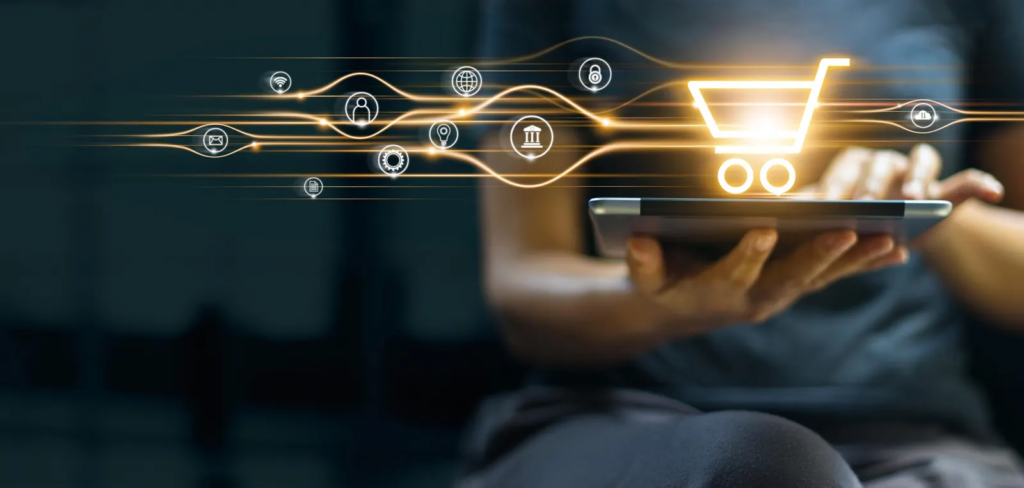E-commerce: Trends, Innovations, and Predictions
In the ever-evolving landscape of technology and consumer behavior, the future of e-commerce is a topic that has captivated the attention of both businesses and customers alike. As we stand on the brink of yet another digital revolution, let’s delve into the trends and innovations that are set to redefine how we buy and sell goods and services online.

The Rise of Artificial Intelligence and Machine Learning
Artificial Intelligence (AI) and Machine Learning (ML) are no longer just buzzwords; they're fundamental components reshaping e-commerce. AI and ML can predict consumer behavior, personalize shopping experiences, and optimize supply chain logistics. Algorithms analyze vast consumer data to suggest products, and chatbots offer 24/7 customer service, enhancing user satisfaction.
For example, Amazon's recommendation engine generates 35% of its total sales. This is a clear testament to how AI and ML can drive sales and improve the user experience.
Personalized Shopping Experiences
AI and ML are paving the way for hyper-personalized shopping experiences. By understanding individual user preferences, these technologies can offer more accurate product recommendations. This shifts the shopping experience from a one-size-fits-all approach to a tailor-made service that meets individual needs.
Augmented Reality and Virtual Reality
One of the most exciting innovations poised to revolutionize e-commerce is the incorporation of Augmented Reality (AR) and Virtual Reality (VR). These technologies enable consumers to interact with products in a virtual space, providing a more immersive shopping experience.
Try Before You Buy
Imagine trying on clothes, seeing how furniture fits in your living room, or even test-driving a car, all from the comfort of your home. Companies like IKEA have already implemented AR apps that allow customers to visualize how furniture will look and fit in their spaces. This "try before you buy" concept is not only convenient but also reduces return rates.
The Ubiquity of Mobile Commerce
The convenience of mobile shopping is undeniable. With increasing smartphone penetration and improved mobile internet services, more consumers are making purchases via their mobile devices.
According to Statista, mobile commerce sales accounted for 73% of total e-commerce sales worldwide in 2021. This trend is expected to continue, making it essential for businesses to optimize their websites and apps for mobile use.
Progressive Web Apps
Progressive Web Apps (PWAs) are becoming a popular choice for e-commerce websites. PWAs offer a seamless experience across desktop and mobile devices, combining the best features of both web and mobile apps. They are fast, reliable, and can work offline, making them a perfect solution for the mobile-centric future of e-commerce.
Blockchain Technology: Beyond Cryptocurrency
Although blockchain is often associated with cryptocurrencies like Bitcoin, its applications in e-commerce are vast and transformative. Blockchain offers a decentralized, transparent, and secure way to track transactions and manage data.
Supply Chain Transparency
Blockchain technology can enhance supply chain transparency, ensuring that products are authentic and ethically sourced. For instance, Walmart uses blockchain to track the journey of food products from the farm to the store, reducing the risk of contamination and improving food safety.
Sustainability and Ethical Shopping
Consumers are becoming increasingly aware of the environmental and ethical impact of their purchases. They are more likely to support brands that are transparent about their sourcing and manufacturing processes.
Eco-friendly Packaging
One way businesses are addressing sustainability is by using eco-friendly packaging. Biodegradable and recyclable materials are gaining popularity, reducing the environmental footprint of the shipping process.
Carbon Offsetting
Another approach is carbon offsetting, where companies invest in environmental projects to compensate for their carbon emissions. Shopify, for example, has committed to offsetting all carbon emissions from shipping, making it easier for eco-conscious consumers to shop guilt-free.
The Influence of Social Media on E-commerce
Social media platforms have evolved from networking sites to powerful e-commerce channels. Social commerce, where consumers can make purchases directly through social media, is growing rapidly.
Shoppable Posts
Platforms like Instagram and Facebook offer shoppable posts that allow users to buy products without leaving the app. This seamless integration between social media and e-commerce enhances the shopping experience and increases conversion rates.
Voice Commerce: The Next Frontier
As voice-activated devices like Amazon's Alexa and Google Home become more prevalent, voice commerce is emerging as a new trend. Consumers can now search for products, make purchases, and track orders using voice commands.
Optimizing for Voice Search
Businesses need to optimize their content for voice search to stay competitive. This includes using natural language and long-tail keywords, as voice search queries are often more conversational.
Conclusion
The future of e-commerce is a blend of technological innovations and changing consumer behaviors. From AI and AR to blockchain and voice commerce, these trends are set to transform the digital marketplace. Businesses that adapt to these changes will not only survive but thrive in this dynamic environment.
Stay informed and ahead of the curve by embracing these trends and making strategic investments in the latest technologies. The future of e-commerce is not just about buying and selling; it's about creating an immersive, personalized, and sustainable shopping experience for all.
For further information, you can visit Statista for comprehensive statistics and data on e-commerce trends.
